RESCUE OPERATION ON “BOERUM HILL” (1964)
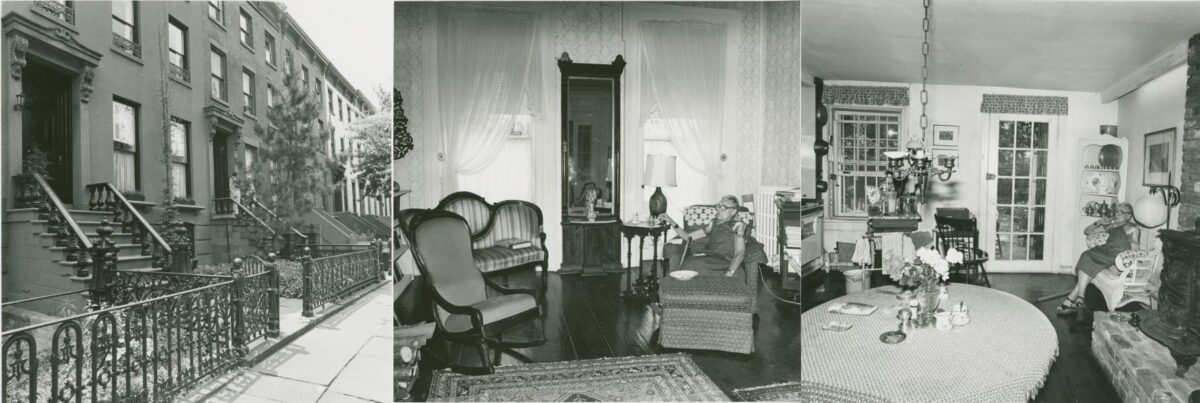
Brownstone Detectives investigates the history of our clients’ homes.
The story you are about to read was composed from research conducted in the course of one of those investigations.
Do you know the history of YOUR house?
********************************************************************************************************************************
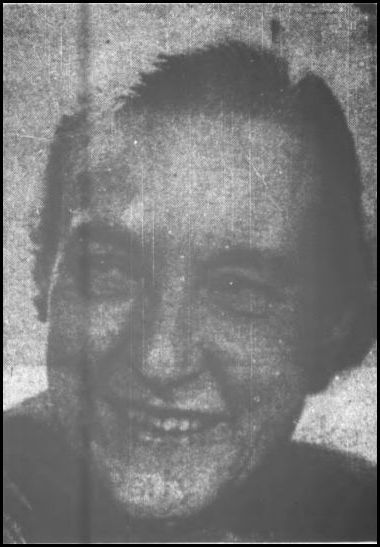
Most Boerum Hill residents do not know the name Helen Buckler – but they should.
While she wasn’t instrumental in building Boerum Hill, she was the reason it got its name. She also started the organization that ushered in the wave of brownstoners and brownstoning in the area, the Boerum Hill Association.
Brownstoning – or the renovation of brownstones back to their former glory – is not a recent trend. Like many other movements, brownstoning appeared in parts of New York City in waves as good/bad economic times ebbed and flowed, neighborhoods fell in and out of fashion, and young professionals, who were usually the harbingers of those waves, “discovered” New York City’s 19th century brownstones.
One of those waves washed over Brooklyn in the early 1960s. Helen Buckler rode, from her Dean Street brownstone, firmly atop the crest of that era’s wave. She named it Boerum Hill.
BOERUM HILL BEGINS
A few years after Buckler bought No. 238 Dean Street, she started the Boerum Hill Association. Then, already at the age of 70, she was no ordinary brownstoner. Her enthusiasm attracted to the organization approximately 20 like-minded families who were also interested in renovating their brownstones in the area.
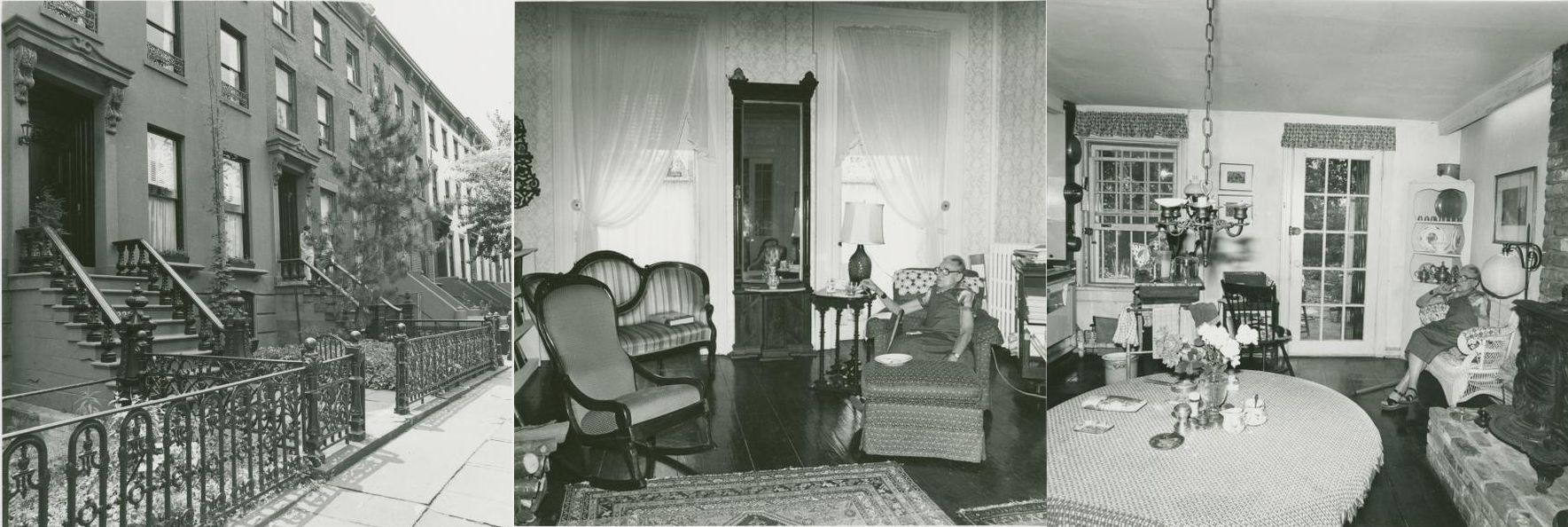
The purpose of the organization was to improve the community and balance preservation and progress. They’ve tackled rezoning issues, fought to preserve green spaces, organized clean-up days in a local park, and have operated an annual house tour, amongst other issues.
Perhaps Buckler did not envision the change that the association would make in the neighborhood in the past 50 years. But it is evident that she was the spark that started the fire.
But who was Helen Buckler? And how did she arrive in Boerum Hill?
In 1964, after her having lived on Dean Street for a few years, a local Brooklyn newspaper, the Brooklyn World-Telegram, came calling at Buckler’s house to find out. What follows is the result of an interview that journalist James Howard conducted.
RESCUE OPERATION ON “BOERUM HILL”
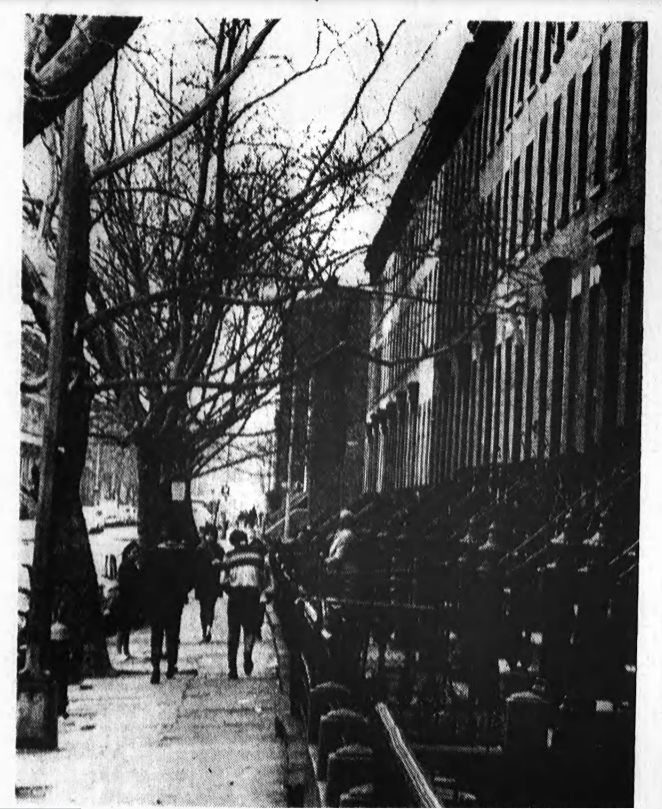
By JAMES HOWARD
Of the World-Telegram Staff
Helen Buckler, a writer and publicist who likes old brownstones with a fireplace in every room, is spearheading a campaign to win public acceptance of a new name, “Boerum Hill” for a run-down section of downtown Brooklyn.
It’s the six-block area bounded by Smith St., Pacific St., Nevins St. and Bergen St., criss-crossed by Dean, Hoyt and Bond Sts.
On the map, this shapes up as an island in the downtown area, with narrow corridors preventing contact with Brooklyn Heights, Cobble Hill, Gowanus, Park Slope and Fort Greene.
20 Families Involved
Miss Buckler bought the old brownstone at 238 Dean St. about two years ago. Remodeling, she kept the first floor for herself, creating a rent-paying duplex on the second and third floors.
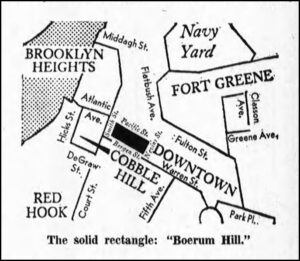
The boundaries of Boerum Hill were fixed arbitrarily to include the ‘homes of some 20 families ‘who have joined Miss Buckler’s Boerum Hill Assn.
Their avowed purpose is to restore the area to the grandeur it enjoyed a century ago. They hope to expand and rub shoulders with rejuvenated Brooklyn Heights and Cobble Hill.
Miss Buckler, who handles publicity for. the Camp Fire Girls, didn’t know when she bought that she was moving into the heart of a DARE (Downtown Area Renewal Effort) area. But they get along fine together because DARE’s Area Service is interested in preserving oneand two-family buildings as well as cleaning up the rundown, overcrowded tenements and rooming houses.
She did know, however, that the area was a modern melting pot—about 40 percent Negro, 30 percent Puerto Rican, with a mixture of Italians, Poles, Lithuanians, Irish and “others.”
Saw Brownstone Ad
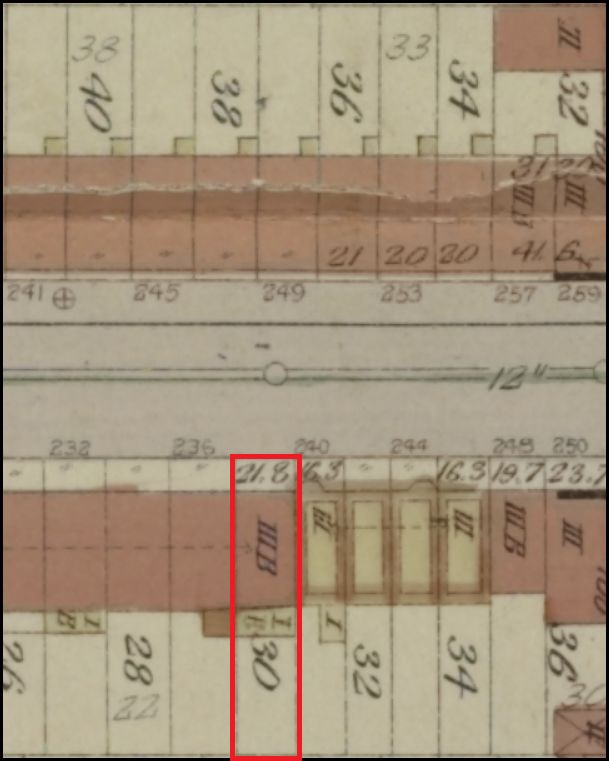
A longtime resident of Greenwich Village, Miss Buckler had lived briefly in Brooklyn Heights, also in many brownstones in various parts of Manhattan. She was crowded in a small hotel off Gramercy Park when her eye fell on an ad offering a four-story brownstone in the “Borough Hall” neighborhood for $18,500.
“I asked why it was so cheap and the agent said, “Well, it’s in a mixed neighborhood,” Miss Buckler recalled today. “If I hadn’t been so enthusiastic I probably could have had it for less. But I have no regrets.”
Embarked on a $12,000 rejuvenation project, Miss Buckler soon discovered that her brownstone wasn’t a genuine brownstone at all. From old timers and construction men, she established that the house, and others of its kind, was built with brick, probably in the middle of the last century, later faced with a thin layer of brownstone in the turnof-the-century style. Woodwork suggested that the sun room in the back—she uses it for a study—was added about 1890.
Real estate men counseled Miss Buckler that the “first thing to do was to name your neighborhood.” She visited borough historian James A. Kelly who agreed, urging her to pick one of historic significance. They looked at maps and there it was, one of the old Boerum family farms through which Howe marched in 1776 pursuing George Washington and his retreating Continentals.
Wonderful Neighbors
Miss Buckler hopes to entice others into the neighborhood. Her tenant is a computer analyst, a Ph.D. with an artist wife young child. Across street a lawyer is doing over an old house which boasts marble fireplaces of Italian Renaissance design.
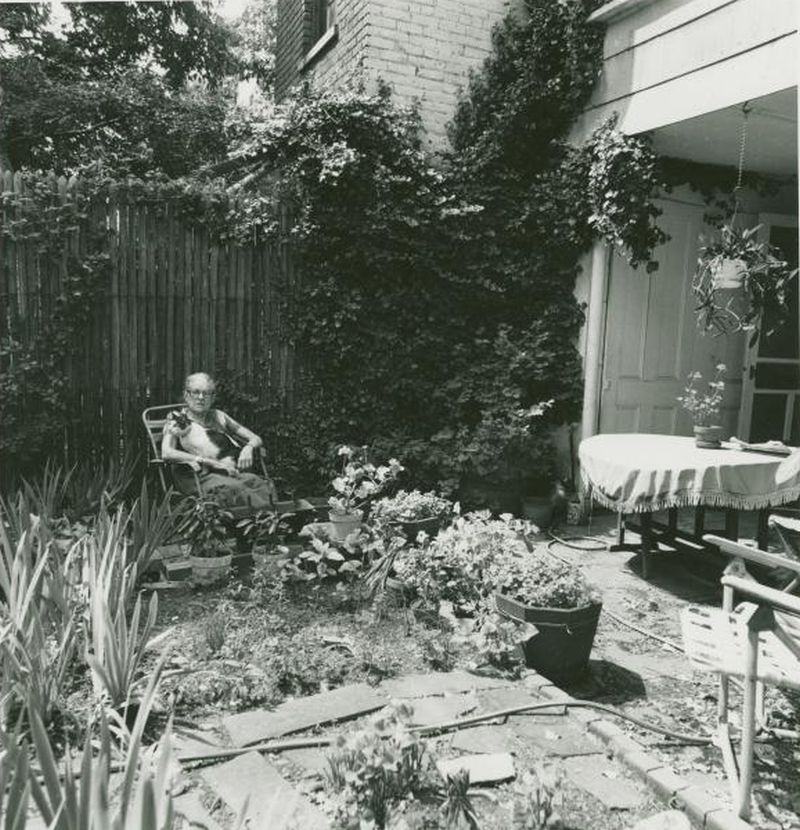
Miss Buckler, who attends services at the Friends Meeting House in Brooklyn Heights, knows two young Quaker couples, newlyweds, who are planning a cooperative venture in a two-family house. Most of her neighbors are wonderful people, Miss Buckler says.
“Down the block there’s a rooming house for men on social security,” she related. The owner has a feud with the kids; he had to put up a hurricane fence across the front.
“I put in ivy plants and tubs of forsythia In the front garden plot. One of the neighbors helped me roll the tubs in. The children stop and exclaim, ‘How pretty your flowers are!’ Nobody bothers anything.”
It’s the same in the back, she said, where the gardens are open and clean for all to see, except for some cluttered yards behind stores or sub-standard buildings taken over by the city. At the rear of her garden, her Bergen St. neighbor cut a hole
through the fence and put his grape vine through so it would beautify her garden as well as his.
She’s a Writer, Too
“Of course, there are noisy people in the block and people who get drunk and fight,” Miss Buckler conceded. “But don’t we have that almost everywhere in New York?”
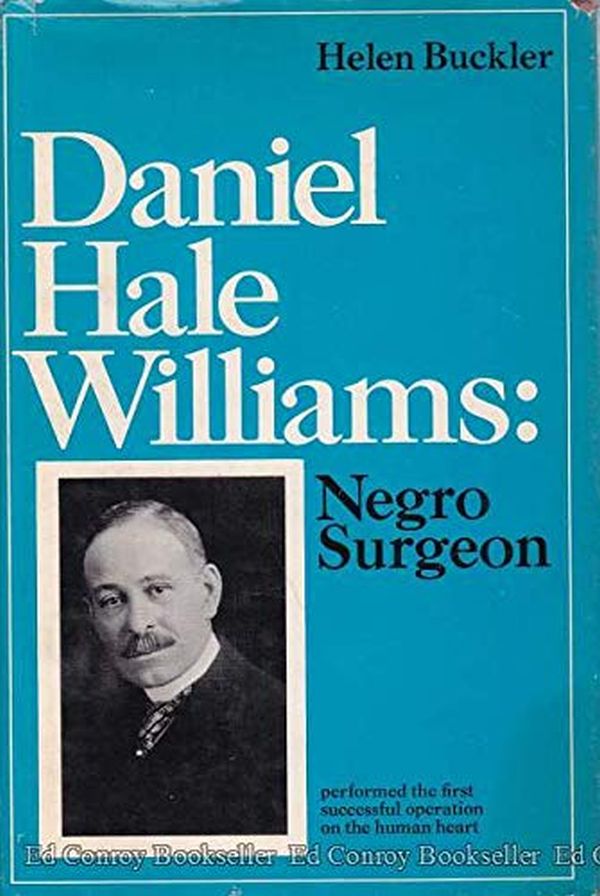
Out of the Middle West by way of the University of Illinois, Miss Buckler is the author of a biography of Daniel Hale Williams, the first American Negro surgeon, for which she was honored by the National Council of Negro Women; also a history of the Camp Fire Girls which won a Freedom Foundation award.
However, she takes particular pride in a plaque awarded recently by the DARE organization “for enhancing this community through the improvement and care of property.” About 20 such citations, including a few to individual home owners, have been issued.
DARE leaders showed no particular interest in the campaign to name the area Boerum Hill. They were neither for nor against. They were happy Miss Buckler and her tiny band were interested in improving the area, too.
DARE’s proud boast was that during the life of the project, 350 tenements and rooming houses have been given cellar-to-roof inspections, 250 families have been relocated, and scores of landlords have been pressured into making their buildings better places to live in. Also, some 200 tons of rubbish have been carted away in cleanup drives, Spanish-English classes have been started, and people generally are developing pride in the community.
(Click here to read more about the history of Boerum Hill, the Boerum Hill Association, and Helen Bucker.)
———————————————————————————————————————–
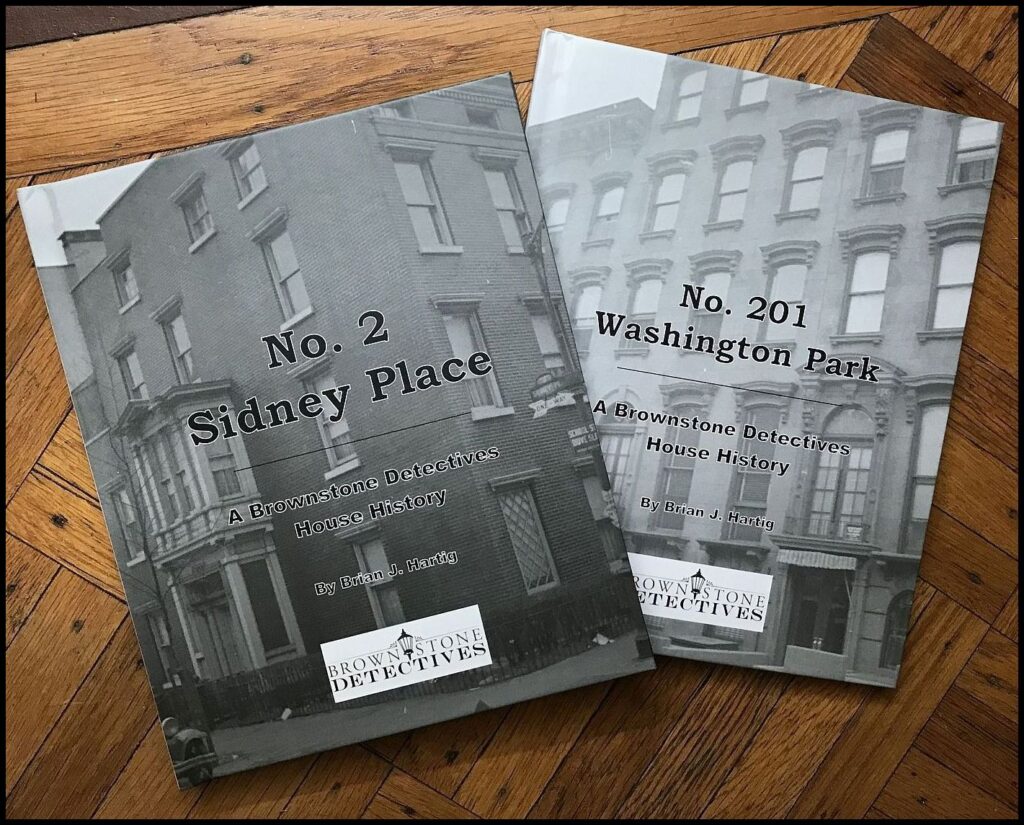 Brownstone Detectives is an historic property research agency. Our mission is to document and save the histories of our clients’ homes. From our research, we produce our celebrated House History Books and House History Reports. Contact us today to begin discovering the history of your home.
Brownstone Detectives is an historic property research agency. Our mission is to document and save the histories of our clients’ homes. From our research, we produce our celebrated House History Books and House History Reports. Contact us today to begin discovering the history of your home.